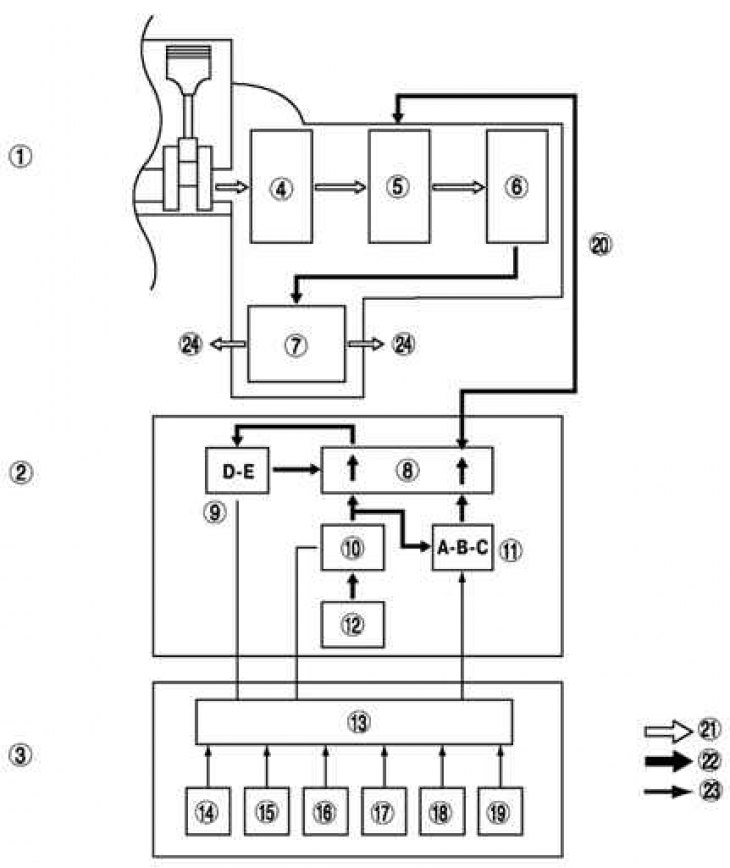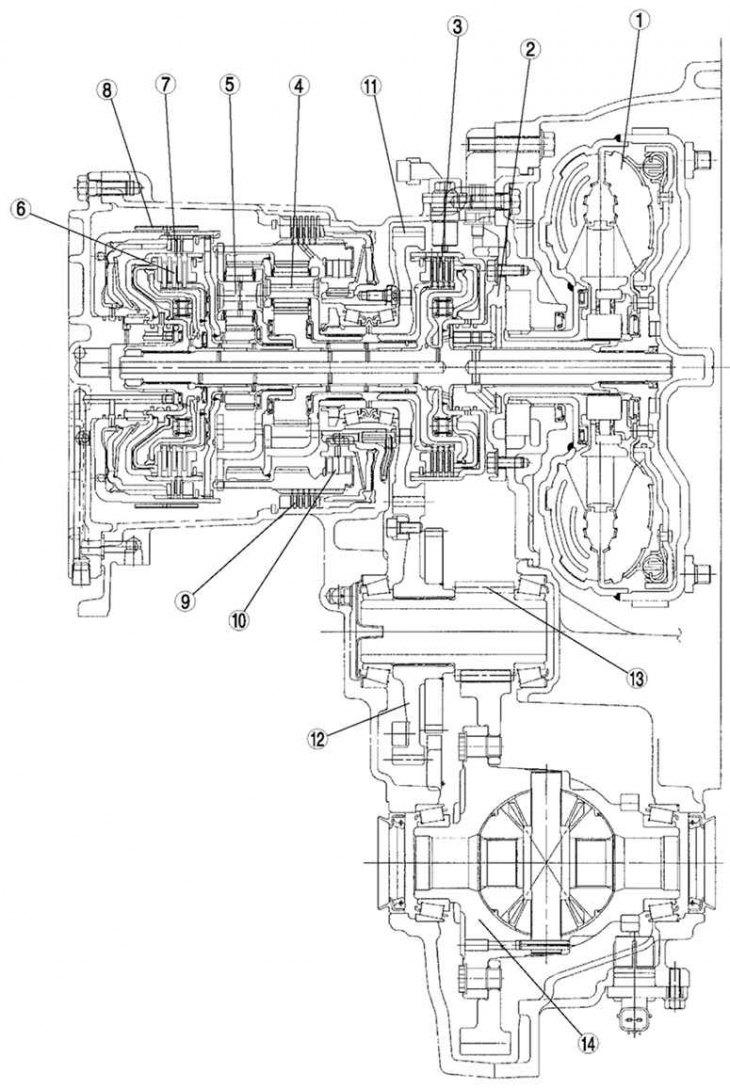Receiving signals from switches and sensors in the input system, the electronic unit of the electronic control mechanism (RSM) outputs a signal that matches existing driving conditions with the linear solenoid, shift solenoids, and duty cycle solenoids in the hydraulic control mechanism.
In turn, the hydraulic control mechanism, receiving signals from the PCM, switches the hydraulic channels in the control valve block and controls the clutch engagement pressure.

Pic. 3.71. Structural diagram of the automatic transmission FN4A-EL of a Mazda 3 car: 1 - transmission mechanism; 2 – hydraulic control mechanism; 3 – electronic control mechanism; 4 - torque converter; 5 - clutches, brakes; 6 - planetary gear; 7 - differential; 8 - block of control valves; 9 - switching solenoids D, E; 10 - pressure control solenoid (linear type); 11 - switching solenoids A, B, C (duty cycle solenoids); 12 - oil pump; 13 - PCM block; 14 – oil pressure sensor signal; 15 – vehicle speed; 16 - temperature of the working fluid in the gearbox; 17 - speed of rotation of the forward clutch drum; 18 - the speed of rotation of the crankshaft of the engine; 19 - throttle position signal; 20 - clutch, brakes, cut-off pressure; 21 - power flow; 22 - hydraulic pressure control signal; 23 – electronic signal; 24 - wheel
The pressure in the pipeline is controlled by a linear solenoid. Hydraulic channels are switched by switching solenoids (shift solenoids D and E), clutch engagement pressure is controlled by duty cycle solenoids (shift solenoids A, B, and C) (see pic. 3.71).
In the transmission mechanism, the driving force from the engine is transmitted through a torque converter to the gearbox in the final drive unit.

Pic. 3.72. Cross section of the automatic transmission FN4A-EL of a Mazda 3: 1 - torque converter; 2 - oil pump; 3 - forward clutch; 4 - planetary forward gear; 5 - planetary reverse gear; 6 - clutch 3-4; 7 - reverse clutch; 8 - brake band 2–4; 9 - reverse gear and low gear brake; 10 - one-way clutch; 11 - gear of the input shaft; 12 - pinion shaft gear; 13 - main gear drive; 14 - differential
The transmitted driving force operates each clutch and brake according to the clutch engagement pressure from the duty cycle solenoids. Planetary gears change the gear ratio to optimize propulsion. Further, the driving force is transmitted through the differential to the wheel drive shaft and then to the wheels.
